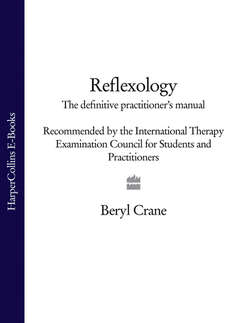Читать книгу Reflexology: The Definitive Practitioner's Manual: Recommended by the International Therapy Examination Council for Students and Practitoners - Beryl Crane - Страница 41
Conclusion
ОглавлениеBy looking at the nerve pathways involved it is possible to answer why working on a meridian or zone has such a powerful outcome. Nerve transmission works on the ‘all or none’ principle, so that the channel will open to stimuli that are strong or long enough; providing there is no congestion of toxic matter the impulse will travel right along the pathway. If there is a blockage then several treatments are usually needed to clear the nerve pathway.
It has been found empirically that the distal points used for acupuncture and acupressure are particularly efficacious. These are in many ways the same points that we may cross at some time throughout the reflexology treatment session. Comparing the two systems, the point SP-1, for example, the first point on the Spleen meridian, is for the nose. This is also the point for the nose in reflexology. Qi is considered to be ascending in this channel. Equally, the last point of the Stomach meridian, ST-45, is known as the ‘sick mouth’, because it is an ideal point to treat those problems at the opposite end of the body. Qi is considered to be descending in this channel. So by treating distal points, and regardless of which way Qi or nerve energy is moving, we get a response. This is exemplified by the aphorism that stubbing your toe gives you a headache, and by the Babinski reflex, the foot indicating what is happening in the brain.
A recent hypothesis to explain the effect of acupressure and acupuncture is that when a needle or pressure is applied at a certain skin depth it seems to stimulate the nervous system in a series of reflex arcs, thus releasing endorphins into the system and producing pain-relieving and opiate effects. We know that the Chinese use acupuncture for anaesthesia and pain relief, and this practice often relieves some other physical symptoms in the process. Acupuncture can be explained by a wave of electrical depolarisation that travels along the nerve pathways activating the deep sensory nerves which cause the pituitary and midbrain to release endorphins, the brain’s natural painkillers. The problem the person is suffering from is often alleviated after a few treatments.
Since the early 1960s, electroanalgesia has been used as a safe and effective method of pain control, regardless of whether it is acute or chronic. There are many manufacturers of electroanalgesic instruments. The theory regarding this therapy is that stimulation by a small electric current, like the stimulation caused by insertion of an acupuncture needle, activates descending inhibitory neurons that block the transmission of pain signals. It is said to ‘close the pain gate’, so this theory is known as the ‘gate control theory’.
The Chinese state in many books that the meridians follow the pathways of the major nerves, and needling or acupressure will activate a point. The nerves lie very close to the bones, and we know that peripheral nerve innervation of the skeleton closely follows muscle innervation. This shows that the same nerve innervates muscles that are attached to that bone. Did Dr William Fitzgerald simplify this whole concept? He stated that pressure over any bony eminence or on the corresponding zone to the location of injury or problem would relieve pain. One of the theories he put forward was that certain control centres in the medulla are stimulated, or that the function is carried out by the pituitary body and its multiple nerve paths from it. He went on to explain that we induce a state of inhibition throughout the body when pressure is brought to bear. When inhibition or irritation is continuous, many pathological processes disappear. He also stated that it was certain that lymphatic relaxation followed lymphatic pressure.
Today there is no concise explanation of the rationale of how or why reflexology works. We as practitioners just accept and know that it does. A recent hypothesis for the effect of acupuncture is that when pressure or needles are applied at a certain depth it stimulates the nervous system in a series of arcs or reflex actions; this may send a motor impulse down a nerve to supply a muscle or gland into stimulation, either contraction or relaxation. One other theory is that this technique stimulates production of pain-relieving endorphins within the brain. These recent theories confirm Fitzgerald’s early thoughts and writings.
